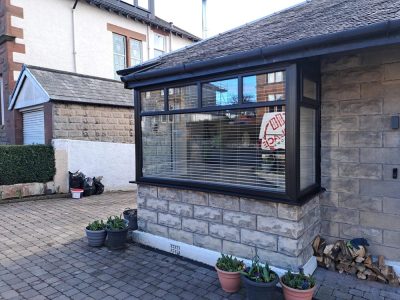
Designing an outdoor space for every generation means more than making it beautiful. It’s about creating a safe place where people connect, share experiences, and enjoy time outside. The result is a harmonious extension of the home where every family member feels engaged, comfortable, and truly included. Here are three design principles for creating a multi-generational outdoor oasis.
Prioritizing Universal Safety and Accessibility
A multi-generational outdoor area starts with security and accessibility for everyone. Remove hazards and guarantee effortless movement with even, slip-resistant walkways. They need to be broad enough for walking side by side or for mobility aids. Choose gentle slopes instead of steps where possible. Also, install ramps for any level change.
Surfaces should be forgiving and stable. Use compacted gravel, poured rubber, or smooth pavers in play areas, rather than loose mulch near seating areas. Offer sample seating with armrests and backrests, and place it conveniently for rest breaks. Shade is also essential. Use pergolas, large umbrellas, or trees to provide a shield. Leave clear sightlines for supervision and relaxation, and forego poisonous plants. Water elements must be shallow, non-slip, or securely fenced.
Creating Zones for Diverse Activities and Connection
A successful multi-generational space features distinct but complementary zones that support varying energy levels and interests. Start with a dedicated children’s play zone covered with soft, impact-absorbing material, placed within a convenient view of the main adult gathering space. Arrange adult seating for conversation nearby, like deep sofas, study armchairs, and generous side tables.
Add a central hub like a dining table beneath a pergola or a fire pit with surrounding chairs. This helps anchor shared experiences, from meals to storytelling and stargazing. Include quieter retreats too: a covered reading alcove, a secluded garden bench for quiet discussions, or a gentle swing. Spaces have to be inviting and cohesive, not segmented. Thoughtful planning using a professional guide to landscape design can subtly delineate areas using low walls, varied materials, strategic plantings, or slight level changes to create intimacy without sacrificing unity or visibility.
Incorporating Engaging Elements for All Ages
For a truly thriving outdoor space, include features that promote active participation by every age group. For children, that may be a sandbox, toddler’s climbing modules, or a level surface for chalk art, biking, and ball games. Shallow splash fountains provide fun, secure water interactions. Young people and grown-ups may appreciate a barbecue area or a bocce ball court. You can even place green or elevated garden beds for plants and blooms.
Sensory gardens appeal to all ages. So, add fragrant, textured plants and blooms that attract pollinators. Incorporate interactive features like a chalkboard wall or bird feeders. Give preference to optimal seating for grandparents, preferably with adjacent tables for beverages or reading materials. Incorporate gentle pathways to their preferred areas, like a sunny nook or cherished flower garden. The aim is to establish multi-tiered chances for collective happiness, turning the outdoors into a place for all.
Endnote
Creating a multi-generational outdoor space presents a wonderful investment in family bonding and health. Focus on safety and accessibility so that everyone can freely maneuver. Craft intentional zones and add features that engage all ages. By doing this, you create an oasis where memories are made and every member of the family feels included.








